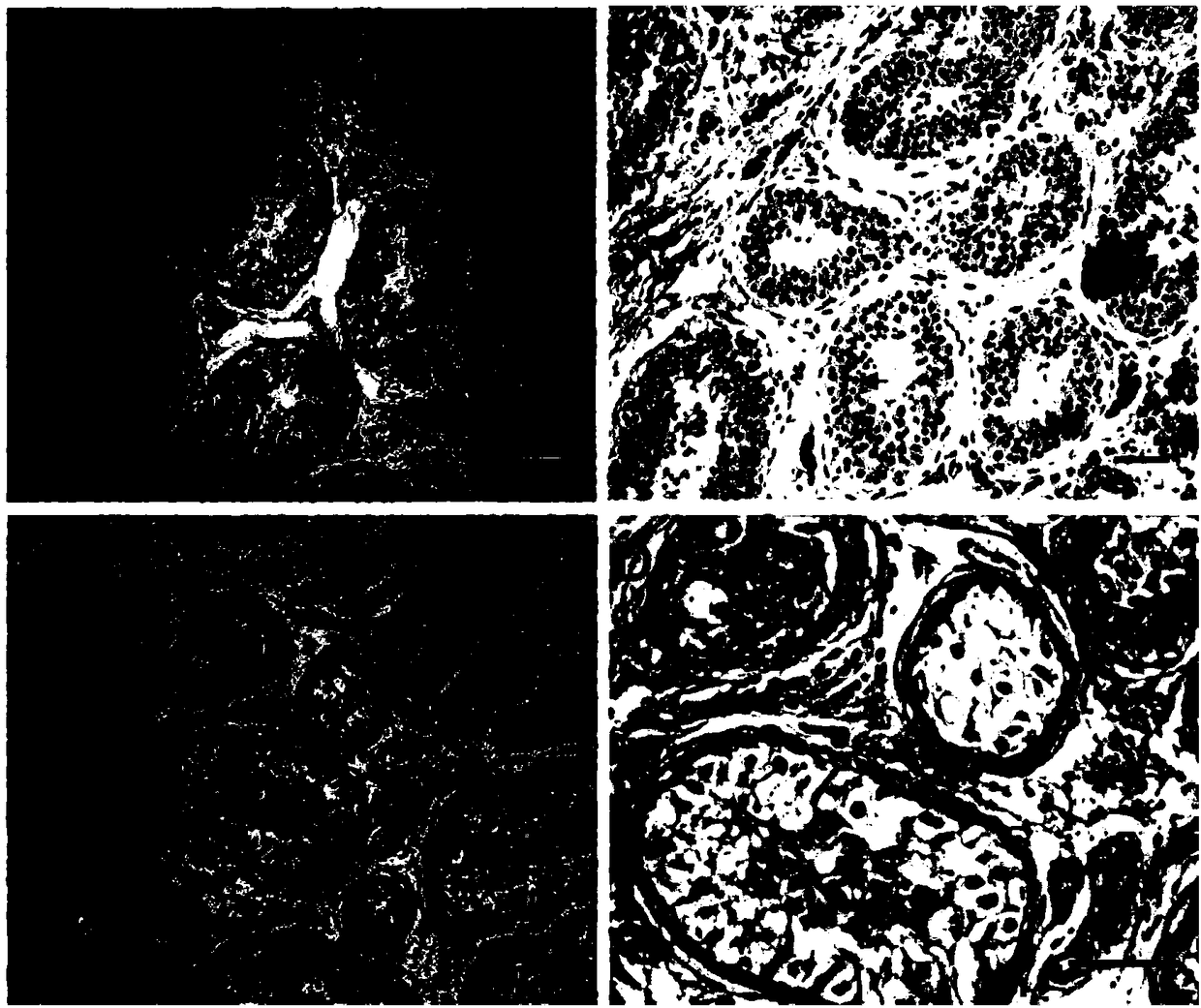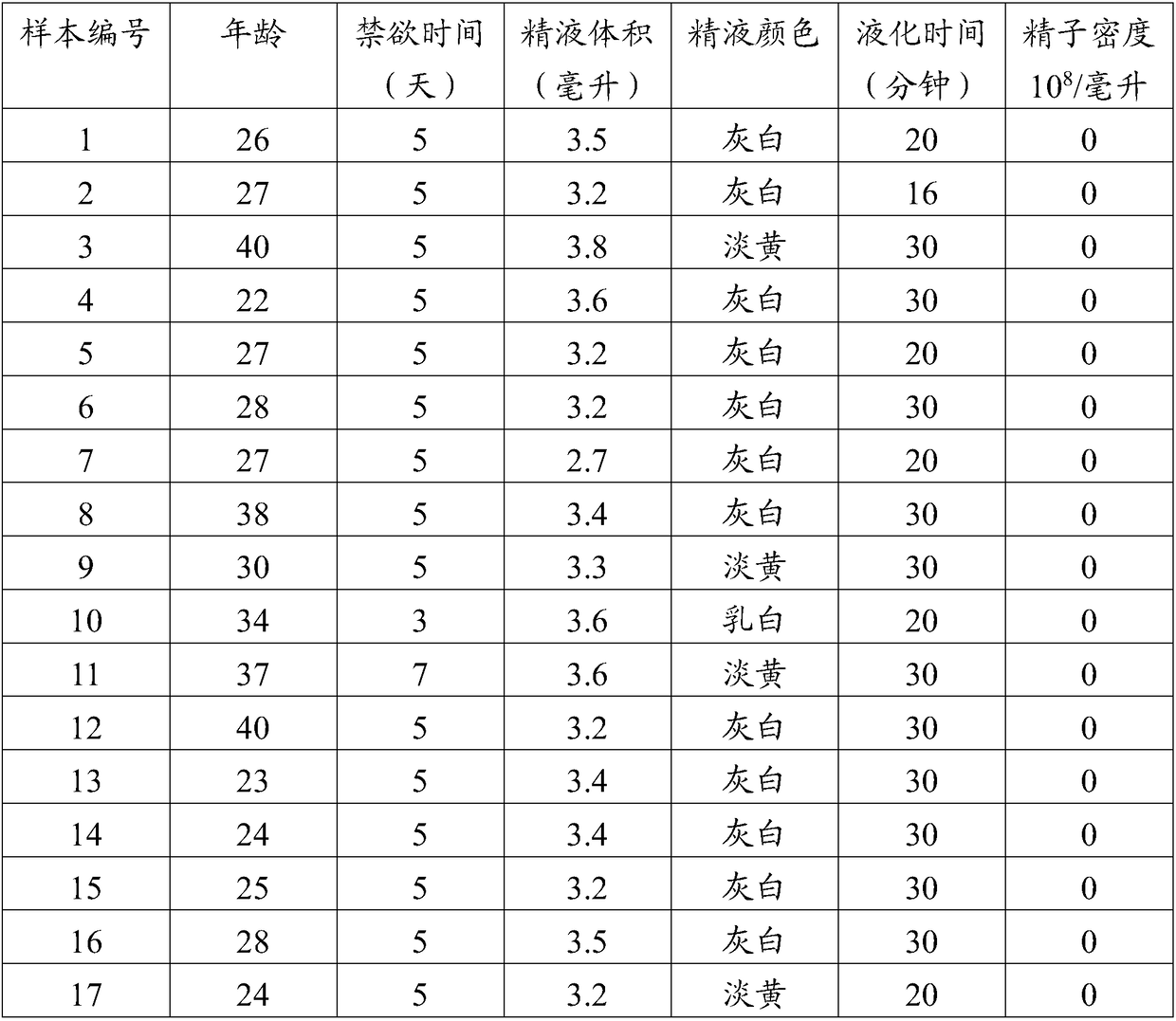Application of SPACA7 gene
A kind of use and genetic technology, applied in the field of non-obstructive azoospermia detection kits, can solve the problems of cumbersome PCR operation and many primers, and achieve the effect of simple operation, short time-consuming, and beneficial to clinical testing
- Summary
- Abstract
- Description
- Claims
- Application Information
AI Technical Summary
Problems solved by technology
Method used
Image
Examples
experiment example 1
[0035] Experimental example 1: RT-PCR detection of mRNA expression of SPACA7 gene disappears in non-obstructive azoospermia.
[0036] (1) Sample information:
[0037] The information of 44 patients with non-obstructive azoospermia and 30 cases of normal fertility is shown in Table 1:
[0038] Table 1. Sample information (1-44 are patients with non-obstructive azoospermia, 45-74 are normal fertile people)
[0039]
[0040]
[0041]
[0042] (2) Method:
[0043] 1. Sample RNA extraction:
[0044] The total RNA of 74 cases of semen samples was extracted according to the instructions of the Trizol reagent (Invitrogen Company, the U.S.), and the steps were as follows:
[0045] ①Place 1ml of semen sample in a sterile centrifuge tube and centrifuge at 8000g for 5 minutes;
[0046] ② Discard the supernatant and seminal plasma, add TRIzol to the precipitate, mix well, and place at room temperature for 5 minutes to fully lyse the sample;
[0047]③Centrifuge at 12000g at 4°...
experiment example 2
[0075] Experimental Example 2: Immunohistochemical detection of the protein encoded by the SPACA7 gene lost expression in non-obstructive azoospermia.
[0076] 1. Objective: To detect the expression of protein encoded by SPACA7 gene in non-obstructive azoospermia.
[0077] 2. Methods: Formalin-fixed paraffin-embedded tissue sections were dewaxed with xylene, and 3% hydrogen peroxide was used to eliminate endogenous peroxidase activity and 10% bovine serum albumin to prevent non-specific binding. The specimen was added with a primary antibody (Abcam, MA, USA), incubated overnight at 4°C, and the antibody diluent was used instead of the primary antibody to obtain a negative control. Thereafter, sections were incubated at 37°C in MaxVision TM HRP-Polymer anti-Mouse IHC Kit (Maixin, Fujian, China) was treated for 15-20 minutes, soaked in 3-amino-9-ethylcarbazole, counterstained with Mayer's hematoxylin, dehydrated, and finally precipitated as crystals. The result is as figure...
PUM
 Login to View More
Login to View More Abstract
Description
Claims
Application Information
 Login to View More
Login to View More - R&D
- Intellectual Property
- Life Sciences
- Materials
- Tech Scout
- Unparalleled Data Quality
- Higher Quality Content
- 60% Fewer Hallucinations
Browse by: Latest US Patents, China's latest patents, Technical Efficacy Thesaurus, Application Domain, Technology Topic, Popular Technical Reports.
© 2025 PatSnap. All rights reserved.Legal|Privacy policy|Modern Slavery Act Transparency Statement|Sitemap|About US| Contact US: help@patsnap.com



